Now that I have returned home to Australia from living in Hangzhou for 2 months, I can reflect on a range of beautiful intricacies of Chinese life. After my last post about home and school life in China, I’d like to explore other differences which I noticed about life in China. Let’s talk about the most important…!
Food
The food in China is remarkable and full of flavour. You don’t see “fast food” restaurants often (although food is almost always served faster than our “fast food”!). In China, you do sometimes see KFC and McDonald’s restaurants. Fast food has not taken off like in the west and I think this is because of the street food culture which offers cheaper, more accessible and, in my opinion, tastier food.
I also had a taste of country life, when l visited rural China. My friend Alvin took my dad and I to his father’s local village (referred to as ‘hometown’) to experience another dimension of local cuisine.
On the day we visited, there was a big celebration lunch held for the entire village as a family had built a new house. There were hundreds of people at the party and they were all given free food and gifts. The children were given “red pockets” with¥100 (AUD $20) and the adults were given high-end cigarettes. Somehow, 14 year old me was considered an adult 🙂 Reasonable assumption I guess since I was taller than most of the country-side adult men!
I have no problems seeing a chicken wing or breast, but this lunch included chicken feet and heads and it was a little confronting looking at it on my plate! The Chinese do not let any part of the animal go to waste. That is because throughout the ages the Chinese cuisine has developed off a society that maximised all food in their quest to feed 1 billion people.
While we were eating lunch, I watched the team of chefs busy preparing our next meal, dinner. I was beyond horrified as they began beheading the live turtles.
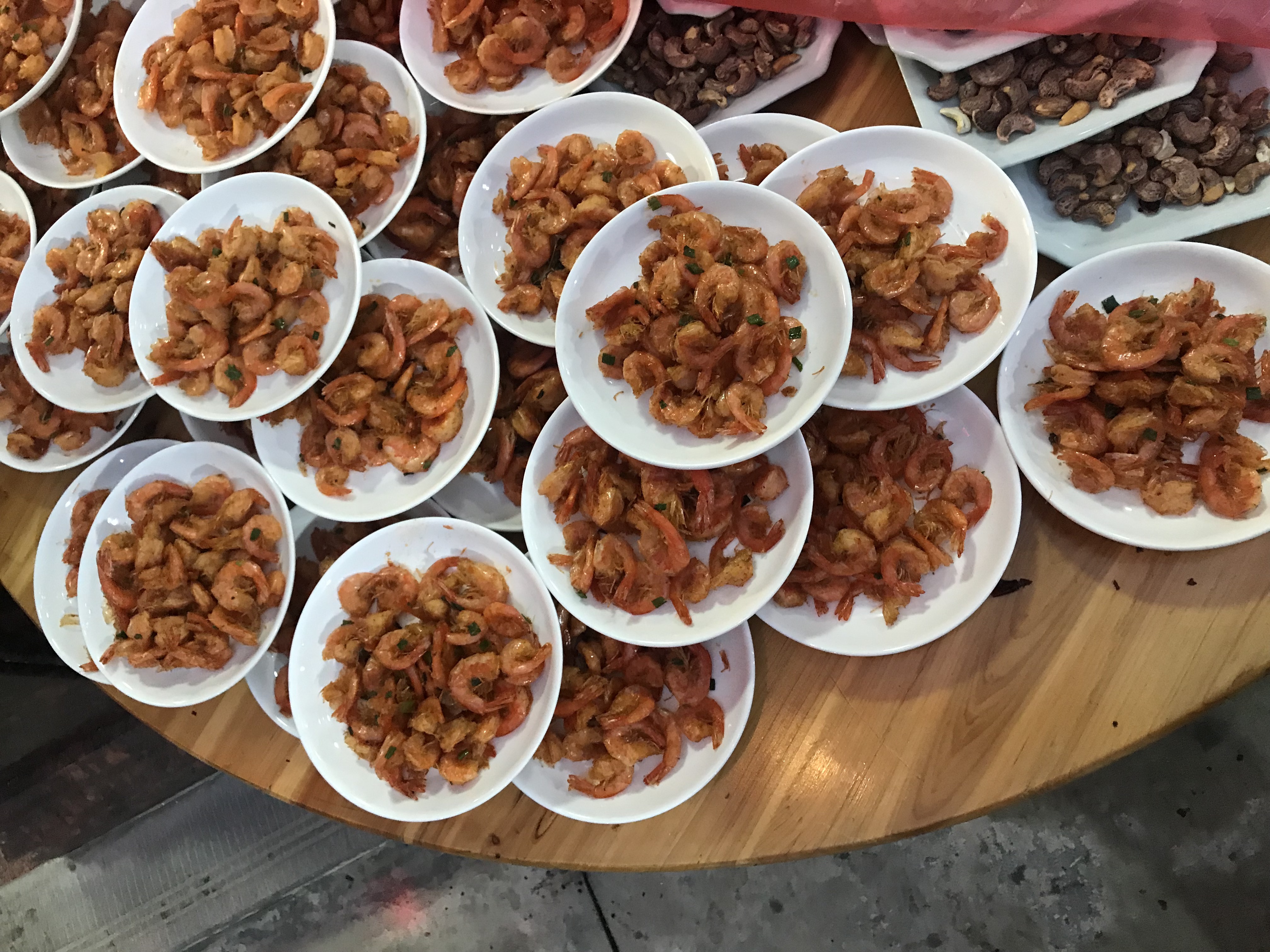
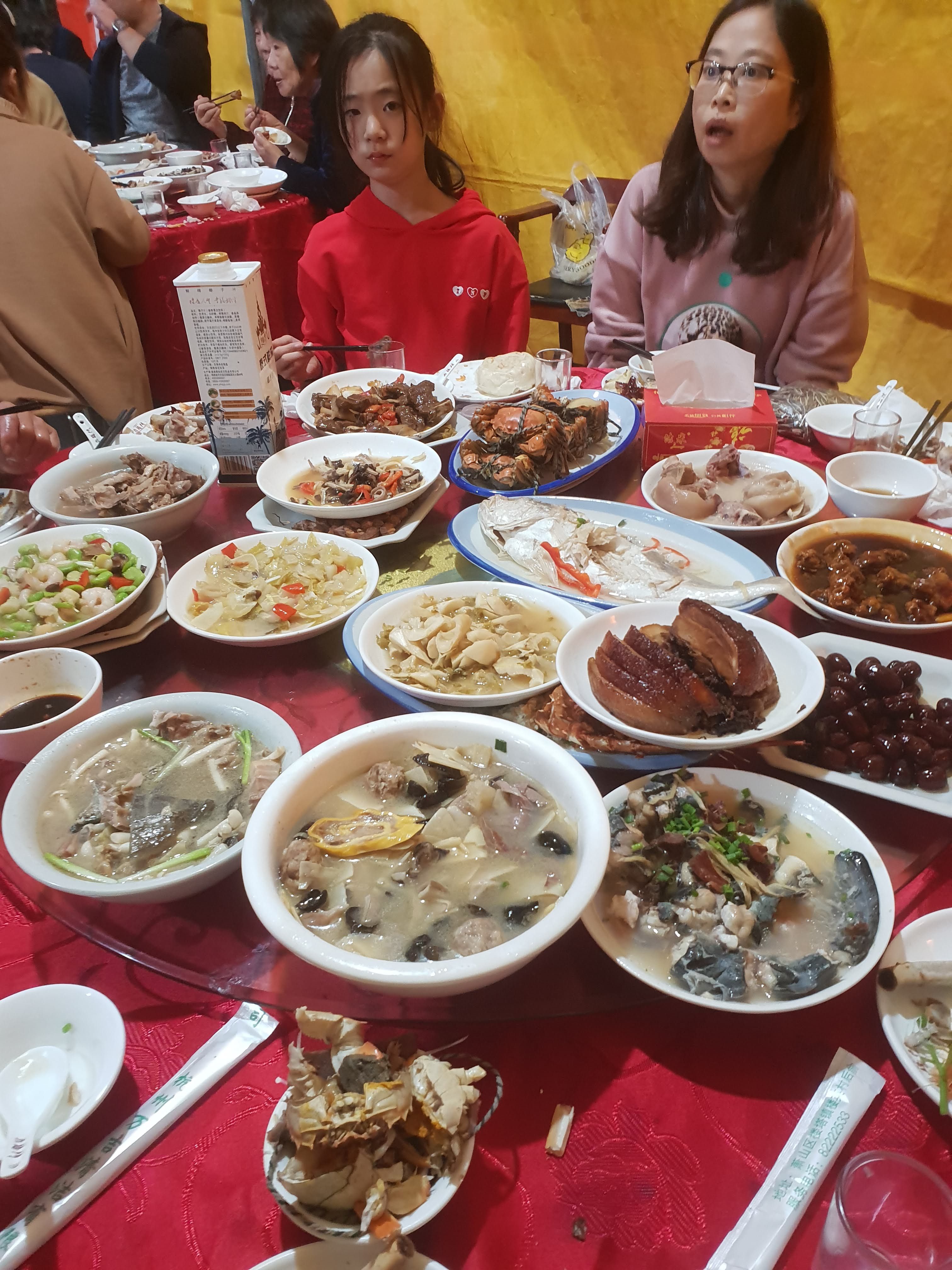
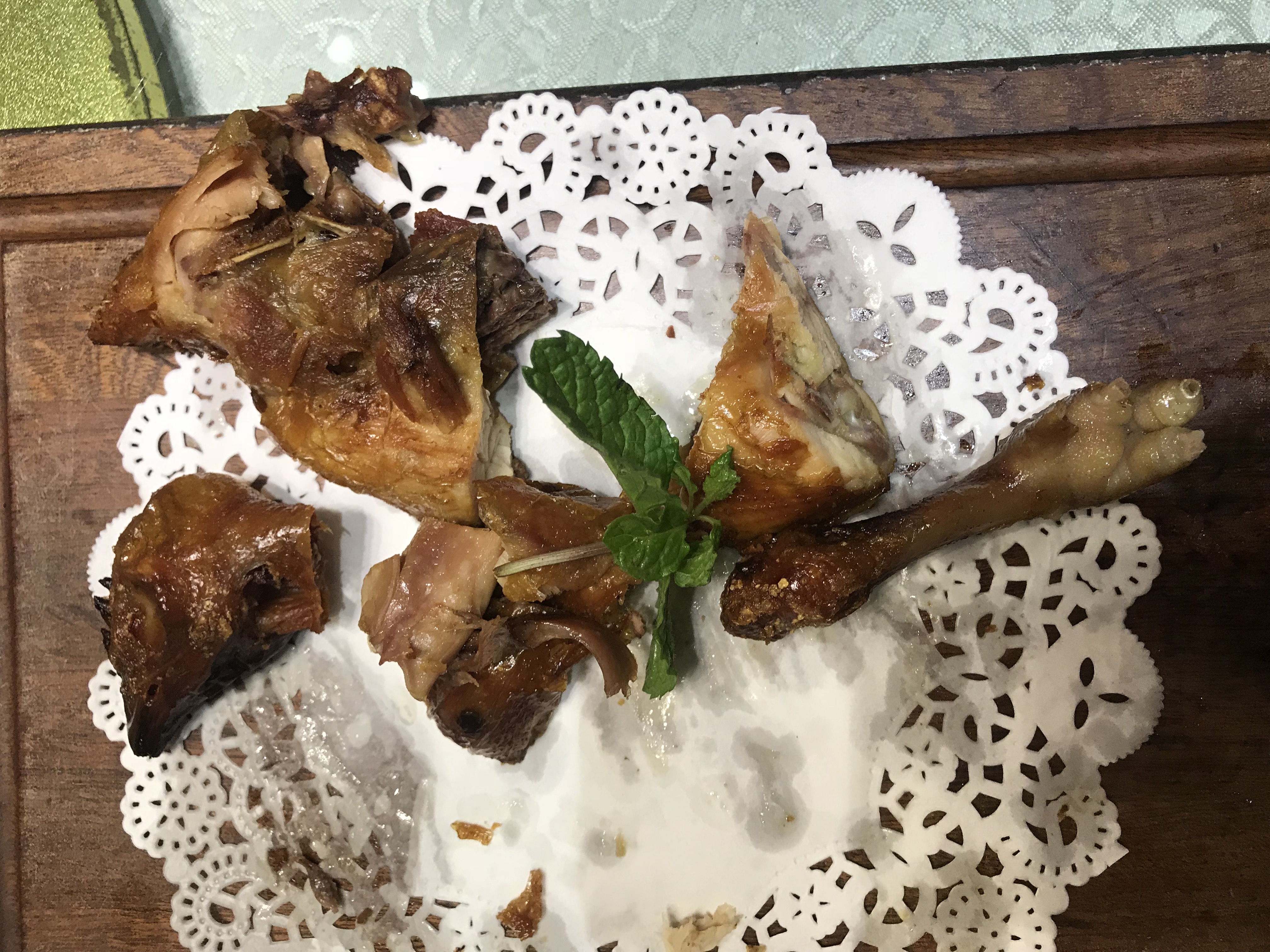
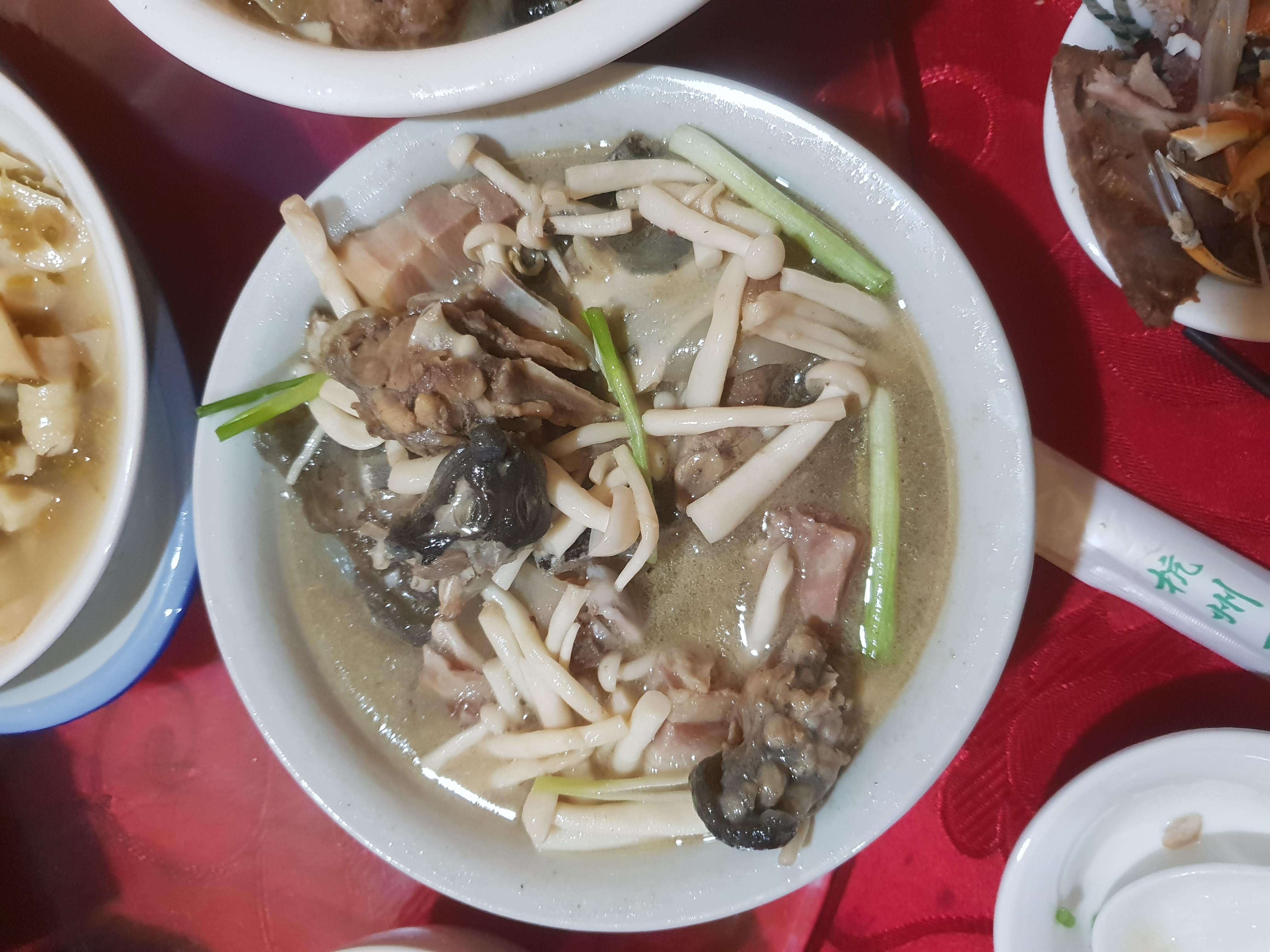
The amount of leftover food from just 1 dinner!

Also, Chinese cooking only uses woks on cooktops, not ovens, so kitchens aren’t fitted with ovens and only sometimes have a microwave! Don’t worry, I solved this problem quick smart by buying an AUD $60 ‘toaster oven’ – which surprisingly worked very well.
I also learnt how the Chinese live without ovens! Each Friday I spent the afternoon with Alvin’s mum and she taught me common dishes that were made in Hangzhou province. We only used a wok and we would make at least 8 (small) dishes for 5 people; Alvin, Mr and Mrs Shen, and dad and I. I much prefer the way we made many smaller dishes because it would allow us to try more food and have more variety, unlike in western culture where you have a main dish (often centred around meat), and maybe 1 or 2 side dishes. This was often the highlight of my week, I loved making the food and you would be surprised how much you can communicate to someone through just hand gestures and just a few basic Chinese words.

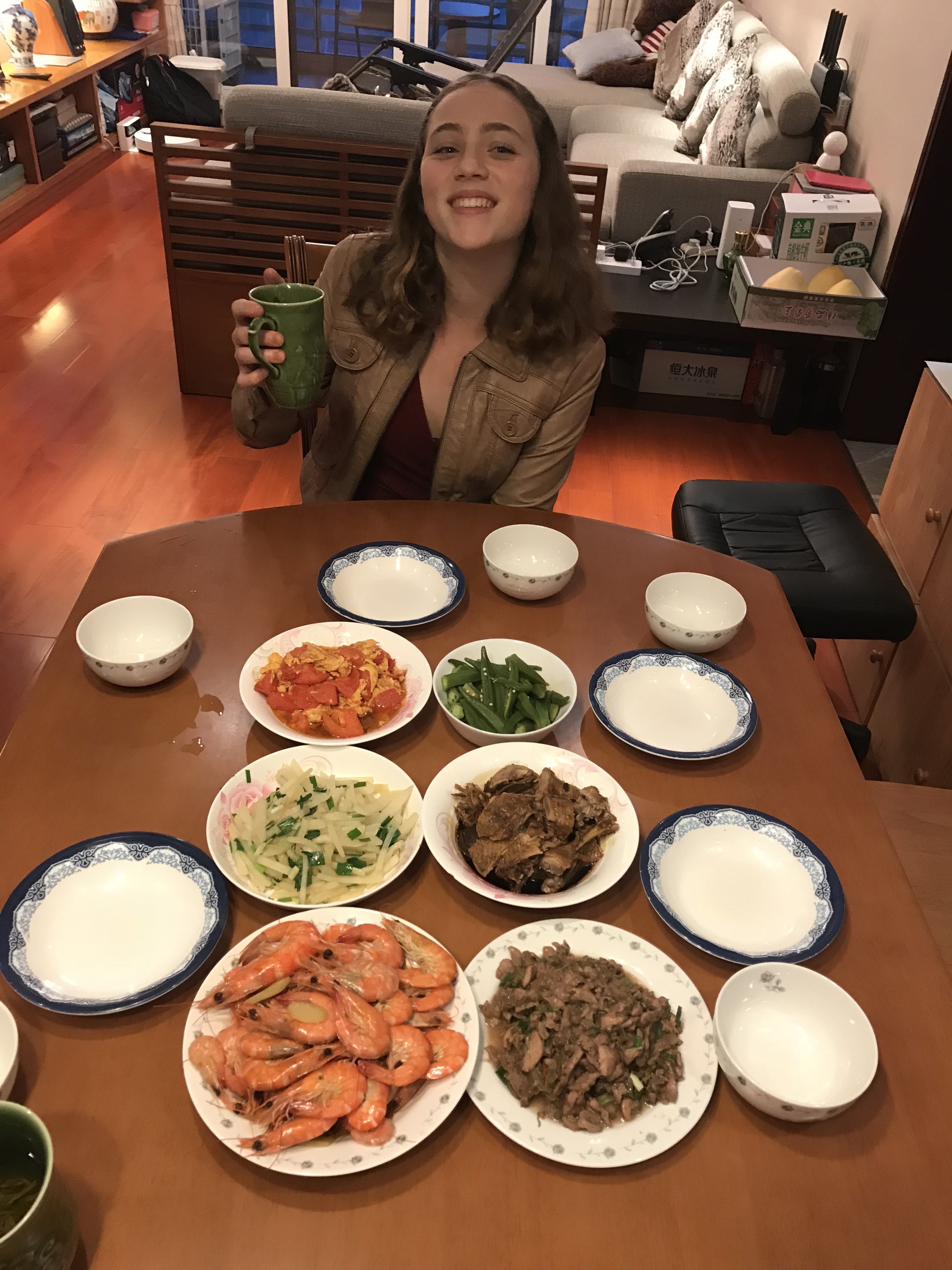
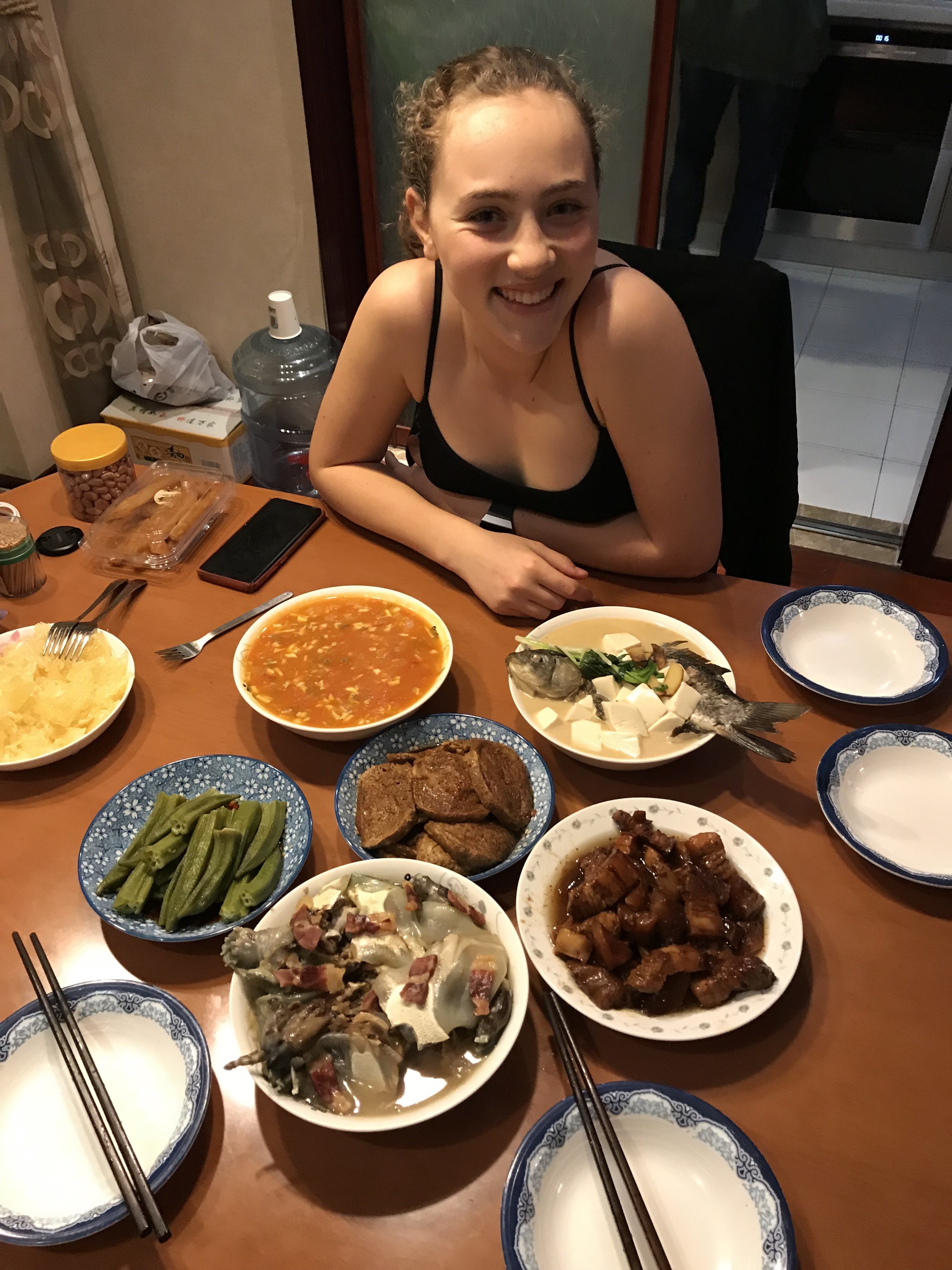
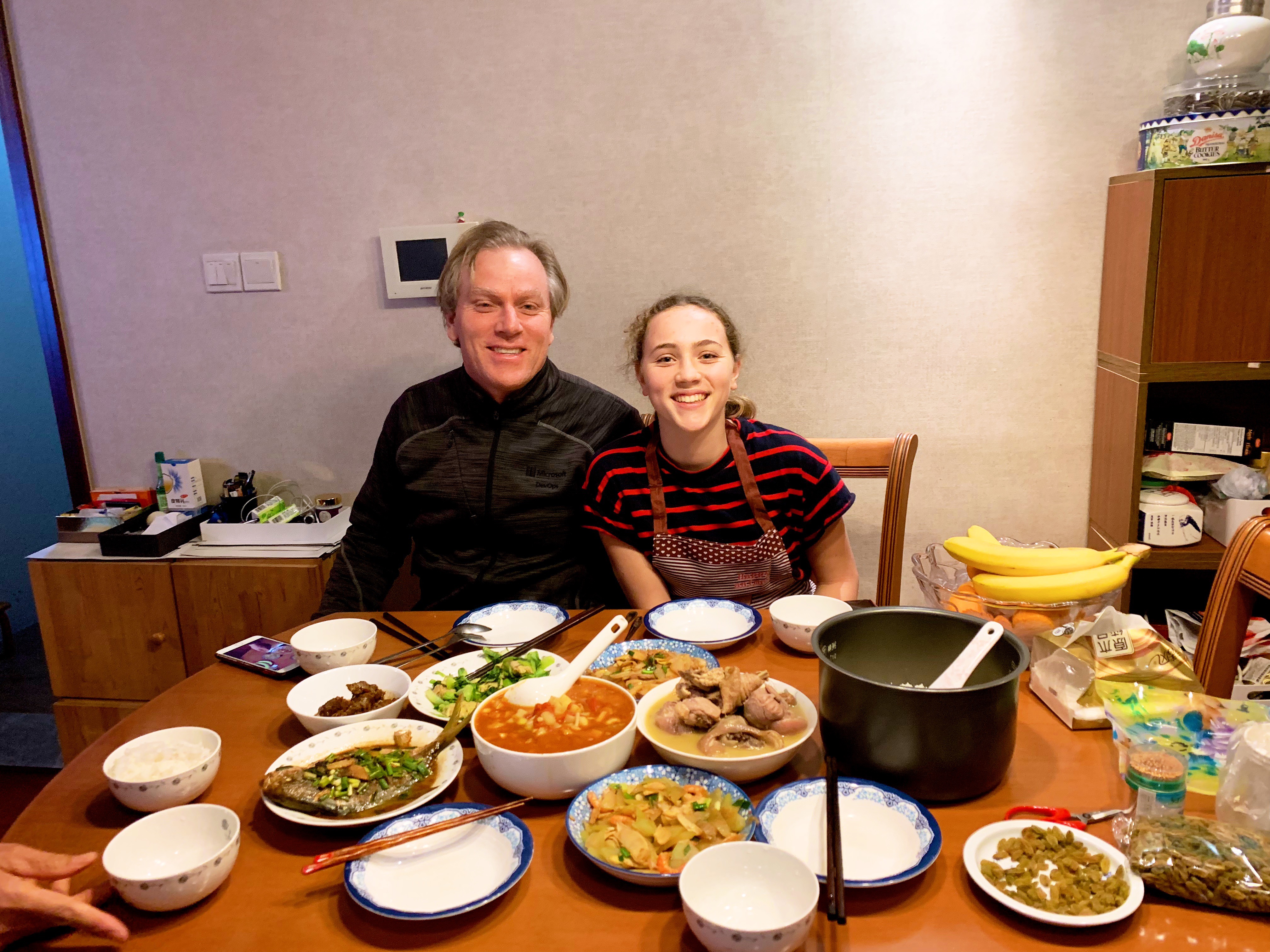

One of my favourite fruits is mango, and in China, mangoes are bigger, sweeter and the fruit shops provide the free service of chopping up fruit in 1 minute!
My friends at international school, however, we’re always seeking familiar food from western cafes. For example, we could go to a local Chinese shop and buy a few baozi (steamed buns) for 6¥(AUD $1.20), but my friends preferred to go to the only international cafe in the area and buy a sandwich or poutine (chips with cheese sauce) for 20¥(AUD $4). While both of these are equally filling, they prefered to pay more than 3 times as much for the international option. So while Chinese food is extremely cheap, easy to find and has large amounts of variety, the same cannot be said about international food. The price is anywhere from 50% to 400% more expensive than home prices for things like cereal and cheese and often you are forced to buy them online as it is nearly impossible to find them in local stores.
I love to bake and took my cookies and cakes to school multiple times a week. I’ve learnt that the Chinese have not discovered this amazing pastime. I found purchasing my baking supplies very difficult so I resorted to buying supplies online (bowls, scales, measuring cups, spatulas, butter, cocoa powder, vanilla etc), using taobao.com and fieldschina.com
The food in China was one of the best ways I experienced the new culture. I This was just a small bit of an insight into school and home during the last two months. Stay tuned for my next post about other differences between China and Australia!
| Ruby |


This is a great post. Thanks k you for the video and pictures. I have never been to China, so this was a great read for me into the local culture.
Glad to see you explored all the wonderful food options. I agree that food is one of the best ways to explore other cultures! I hope you can keep up the cooking when you return.